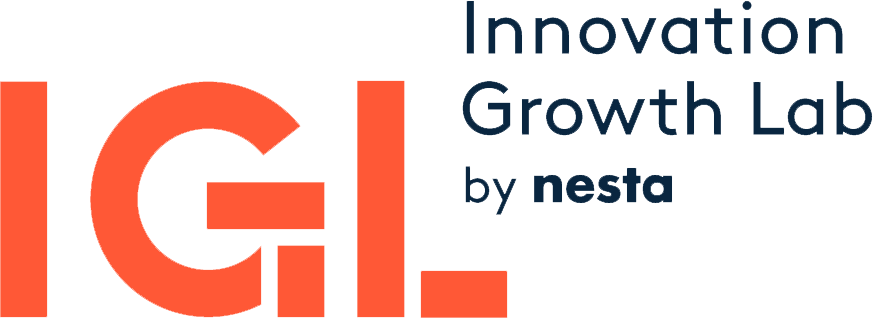
Our research on business support showed a number of surprising results. Yet as often happens with these types of figures, the devil is in the details. We have therefore decided to explain further how we conducted our research.
Our definition
Defining business support is quite tricky. We were interested to know how much the government spends with the primary aim of supporting companies and entrepreneurs. There are programmes, especially when it comes to spending by the Department for Business, Innovation and Skills (BIS), that undoubtedly fall under this category (e.g. the Growth Vouchers programme). However, in many other cases programmes had multiple aims and were therefore not as clear cut.
We started by defining what was not business support. We excluded procurement – despite the fact that it constitutes one of the main channels through which British companies and SMEs benefit from the state. This was because its primary goal is, broadly speaking, to provide a service to the public - not to support businesses. For the same reason, we decided not to include subsidies for public goods, such as those going to the transport system.
This left us with the following, relatively broad, definition:
Any programme mainly aimed at fostering the growth, performance or productivity of businesses or entrepreneurs.
Under this definition, we included programmes that had multiple goals, as long as one of its primary goals was to support businesses. For instance, the Employer Ownership of Skills, which allows employers to invest in their workforce’s skills, is both aimed at helping workers develop their potential and to “drive enterprise and economic growth”. It therefore counts as business support as we define it.
[Below is a visualisation of our research results. To explore spending in each department, click through the blocks. To go back, right click on a block.]
Procedure
We went through the publicly available annual reports for the financial year 2013-2014 (the most recent year for which all reports were available), and identified, as much as possible, programmes that fit our definition. Usually, the aims of the programme were either very obvious, or could be easily deduced by a quick internet search. Sometimes, however, the break-down of the programmes was not clear at all in the annual reports – with funding often broken-down by ‘thematic spending’, rather than individual scheme. If it was not possible to disentangle what amount of spending went to business support, the figure was not included.
Whenever information was unclear or missing, we resorted to Freedom of Information Requests, which were, for the most part, answered relatively quickly and clearly. When there was doubt about whether a programme fit within our description of business support, we erred on the side of caution, and excluded it, in order to avoid inflating the numbers with programmes that do not, in fact, provide support for businesses. We covered most departments, although only eight of them turned out to have relevant programmes.
Based on our findings, we were able to divide all programmes into four categories:
- Grants: this is the most direct type of support, with money going directly to businesses or entrepreneurs – e.g. Innovate UK’s Growth Vouchers.
- Loans: including any type of funding to be repaid, loans are mainly concentrated in two large subsidiaries of BIS, the British Business Bank and Green Investment Bank.
- Tax expenditure: this amounted to the largest quantity of business support. It is not actual spending, but rather an estimate by HM Revenue and Customs (HRMC) of foregone tax revenue. For instance, through the R&D Tax Credits, a company can deduce its expenditure on R&D from its tax bill. In practice, this represents an indirect subsidy to the company.
- In-kind support: these are programmes that help businesses through advice, expertise, help in securing contracts with foreign providers, etc. In practice, the costs incurred relate to the delivery cost (paying specialists, missions abroad, etc.). An example is ‘Passport to Export’, a programme by the UK Trade and Investment to help new or inexperienced exporters grow their overseas opportunities.
Programmes with activities spanning multiple categories were labelled as ‘mixed’.
Estimates
As stated above, oftentimes annual reports were not very clear about the exact sum of money spent on a programme. Some departments reported administrative and other costs separately from the rest; other did not. More importantly, many of the figures presented included co-funding from other agencies, departments, or businesses themselves (for instance, when a grant required matched funding). Similarly, some programmes generated income for the department. We therefore decided to provide different estimates: an upper estimate of all business support programmes, that may include co-funding and have a limited amount of double-counting across agencies, and a lower bound, where we subtracted all co-funding and income, that may in fact exclude some spending that did reach businesses. The difference was, however, quite reduced (£62 million out of roughly £9.8 billion).
Grey areas and caveats
There are a few items that would have made a large difference but were ultimately not included. The largest by far is capital allowances – which overall amounted to £23 billion in 2013-2014. The reason for excluding them was that we considered them an integral part of the tax system, i.e. they exist in most countries, and they reflect the fact that in order to make profits, firms must invest in capital. Another large figure comes from UK Export Finance, which in that period claimed to have spent £2.3 billion helping businesses export. However, the majority of this costing was dedicated to financial guarantees, and therefore constituted neither direct nor indirect spending. Part of the £2.3 billion appears to be comprised of loans; however, it was not possible to disentangle the actual figure, and was therefore excluded.
All in all, this exercise was more difficult than one might have thought. The inconsistency of annual reports, coupled with a general lack of clarity over what is spent on each programme, means that a perfect measure of business support is impossible to obtain. Our research aimed to be comprehensive while avoiding over-estimating the numbers; the fact that it took so much time and effort demonstrates that there is still a lot departments can do to improve transparency and accountability. We are keen to receive feedback on our findings, and would be happy to improve our estimates if more information is provided.
